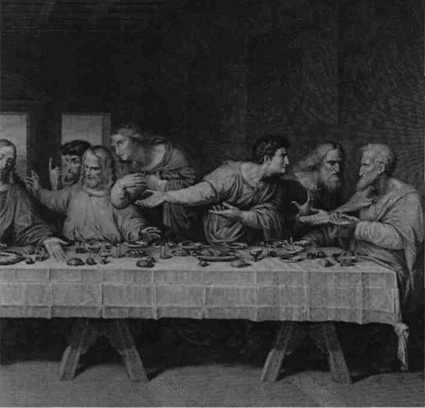Andrew Graham-Dixon on the problems raised by reproducing great works of art.
EVERYONE knows reproductions are dis-honest, but it can be hard to know how dishon¬est. Take the illustration to this article. A late engraving after Leonardo da Vinci's sadly de¬cayed masterpiece The Last Supper — one of the most frequently reproduced works of art in history — it's a real high scorer on the infidelity scale.
Leonardo finished the original in 1498. Painted on the end wall in the refectory of Santa Maria delle Grazie in Milan, using an unsuccessful experimental variant of tradi-tional fresco technique, it had deteriorated noticeably less than 20 years later. In 1795, by which time the painting had been "restored" to the point of obliteration, Grand Duke Fer-dinand III of Tuscany commissioned Teodoro Matteini to produce a drawn copy of what sur-vived. This was Raphael Morghen's model for his own late eighteenth century etching of the subject — which was in turn the model for Pietro Vedovato's 1821 stipple engraving, re-produced here.
If that isn't enough, the image in The Independent has itself been extensively processed. A black and white photograph of Vedovato's print has been scanned visually by a machine called an "Autokon", scaled to fit the space available and printed on to a sheet of bromide paper through a screen of eighty dots per square inch (hold the paper up close and you'll see the dots). The bromide was pasted on to the arts page, which then went to press. If I count it right what you are looking at, in effect, is the last last last last last last last Last Supper.
The Image Multiplied — a large, sprawling exhibition at the V & A, thought-provoking at every twist and turn of its labyrinthine installa-tion — takes as its subject "Five...


